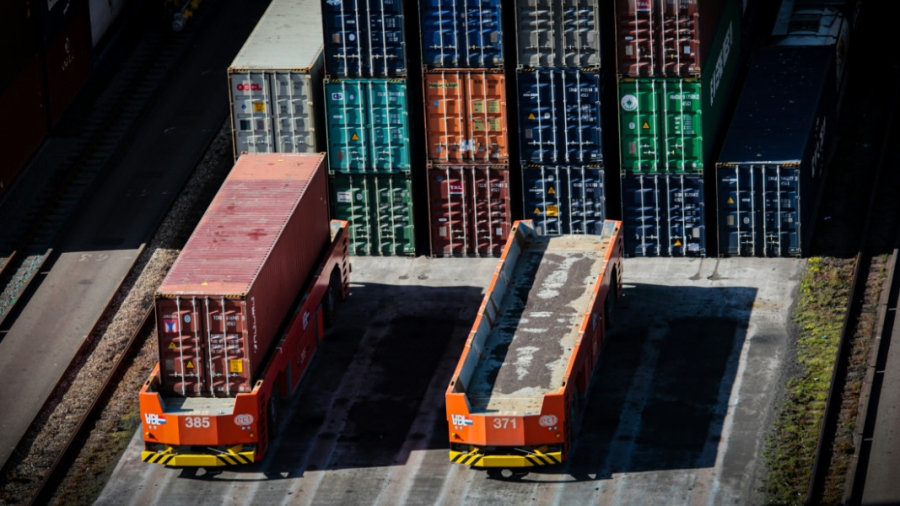Over the past month, there’s been a notable spike in the movement of empty international and domestic containers into the Los Angeles market, signaling a critical shift in the freight industry. This surge highlights a growing demand that is outpacing the available supply of containers, both on the West Coast and overseas. Fortunately, the transportation market appears to be managing the increased demand for now, but this trend raises important questions about the future of freight capacity.
The Core of U.S. Consumer Goods Flow
Southern California, particularly the ports of Los Angeles and Long Beach, is the central hub for the influx of consumer goods from Asia. These goods, including electronics, furniture, and apparel, are primarily destined for consumption markets in the eastern U.S. As a result, most of these imports are transported eastward via rail or truck. This route, focused on finished consumer goods, differs from the more dispersed routes associated with raw materials and manufacturing.
Over the past 30 years, companies have increasingly turned to Asia for production due to its cost advantages, which has solidified this trade route as the dominant flow of goods into the U.S. However, this mechanism has also created a significant imbalance in transportation capacity. Containers move westward full of goods but return to Asia empty, creating inefficiencies in the system and putting pressure on shipping capacity in both Asia and Los Angeles.
“Locally we faced some challenges this month, but our team excelled at rebounding quickly and maintaining the customer service Port Houston is known for,” said Roger Guenther, Port Houston’s executive director.
Despite these setbacks, Port Houston’s overall tonnage increased 3% year-to-date, reaching a total of 31 million tons. The port saw growth in specific cargo types, including imports of plywood, wind power equipment, and wood/fiberboard. However, steel imports dropped 14% year-over-year to 367,915 tons, while steel exports plummeted by 40% to 18,955 tons.
Interestingly, empty import container movements rose by 17% in July, signaling global carriers’ efforts to reposition containers for future cargo. In contrast, loaded imports and exports both declined by 5% and 4%, respectively.
The Imbalance of Empty Containers
The imbalance in container flows is a persistent challenge in the transportation industry. Once goods arrive in the U.S., containers are often sent back to Asia empty, as there is little outbound demand for the same volume of goods. This inefficiency also affects rail and truckload carriers, with many moving empty containers across the country. This lack of a natural flow of goods back to the origin points means that capacity can tighten quickly in areas where it’s needed most.
Recently, loaded domestic intermodal container volumes out of Los Angeles have surged, with daily volumes in August averaging over 10% higher year-over-year. This marks the fastest growth rate of the year. Similarly, truckload tender volumes in June saw a 20% increase, pushing rejection rates to multi-year highs before the Fourth of July. However, tender volumes and rejections eased throughout July.
Intermodal Eases the Pressure
The data suggests that intermodal transport has absorbed some of the demand, relieving pressure on truckload capacity. Despite a spike in tender volumes out of Los Angeles last week, the impact on capacity has been minimal. Tender rejection rates only rose slightly from 5.1% to 5.45%, and spot rates for routes such as Los Angeles to Chicago saw only a modest increase of 0.4%.
This suggests that the transportation market has been able to absorb the increased demand, especially as the Labor Day holiday approached. However, the surge in empty container moves hints that more pressure could be on the horizon.
Looking Ahead: Freight Market Vulnerabilities
While the transportation market has shown resilience, the surge in empty containers is a sign that challenges remain. Since the pandemic, there have been improvements in port and rail infrastructure, but the freight market is not without vulnerabilities. Truckload capacity, for example, remains abundant for now, but this is the sector facing increasing pressure.
John Kingston recently highlighted the growing instability in the trucking sector, with credit issues signaling potential exits of carriers from the market. Although September may not see a drastic shift toward tighter capacity, the risks for the fourth quarter are mounting. Strong demand dynamics, coupled with the ongoing loss of capacity, could create significant challenges for the domestic transportation market.
As we approach the end of the year, freight companies should remain vigilant and prepare for potential disruptions. While the system has shown it can handle current pressures, the surge in empty container moves suggests that more capacity issues may arise, especially as we enter the holiday season and demand peaks.
In short, the freight market is currently managing, but the growing demand for containers and the risks to capacity mean that the next few months could bring significant changes.



